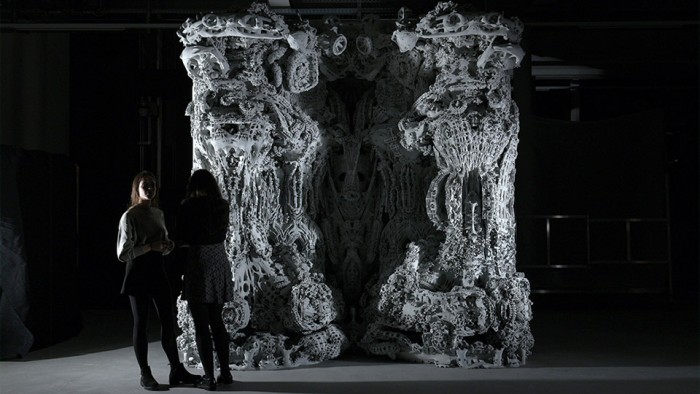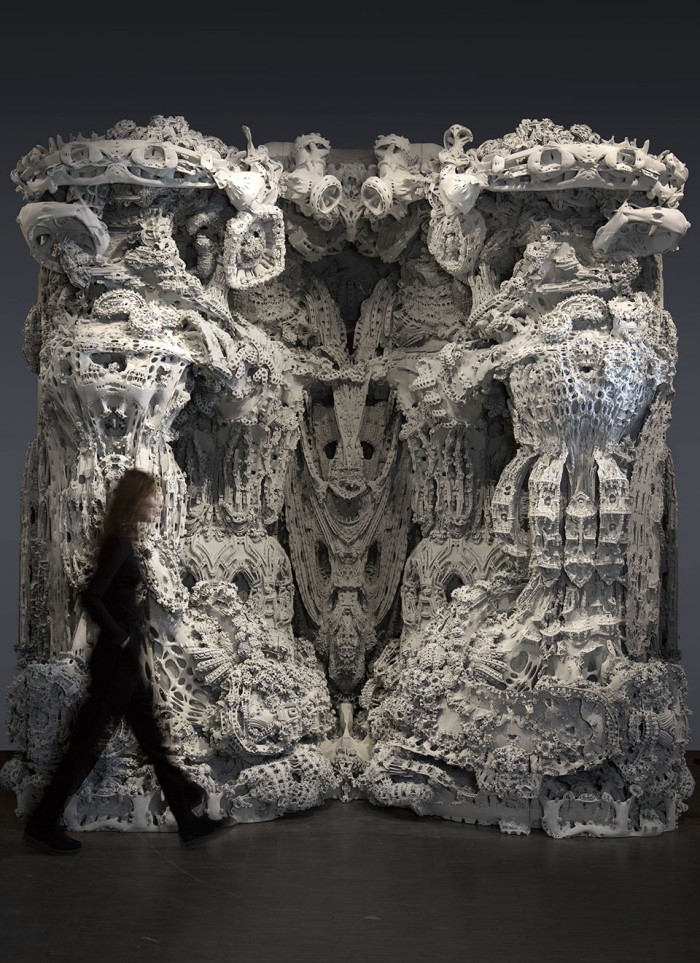Architects Michael Hansmeyer and Benjamin Dillenburger are behind two full-scale digital grottos that explore the possibility of a digitised future for architecture. Dubbed, Digital Grotesque, the grottos go beyond the idea of reductionist architecture. “Digital Grotesque is between chaos and order, both natural and the artificial, neither foreign nor familiar. Any references to nature or existing styles are not integrated into the design process but are evoked only as associations in the eye of the beholder,” write the designers.
But, it’s not about function: “It examines new spatial experiences and sensations that these technologies enable.”
In the Digital Grotesque project, the architects use algorithms to create a form that appears at once synthetic and organic. The first grotto was commissioned by FRAC Centre, Orléans, for its permanent collection. The second grotto, Grotto II was commissioned by the Centre Pompidou and premiered at the Imprimer le monde exhibition in March 2017.
Grotto II is an ornamental structure out of 7 tonnes of printed sandstone that demonstrates how computational design and additive manufacturing can make new architectural worlds tangible.
According to the designers, it’s a large-scale look into the future: “New materials and fabrication methods have historically led to radical changes in architectural design. They have indeed been the primary drivers in its evolution. Today, additive manufacturing heralds a revolution in fabrication for design. Yet in architecture, this technology has up to now been used only for small-scale models.”






